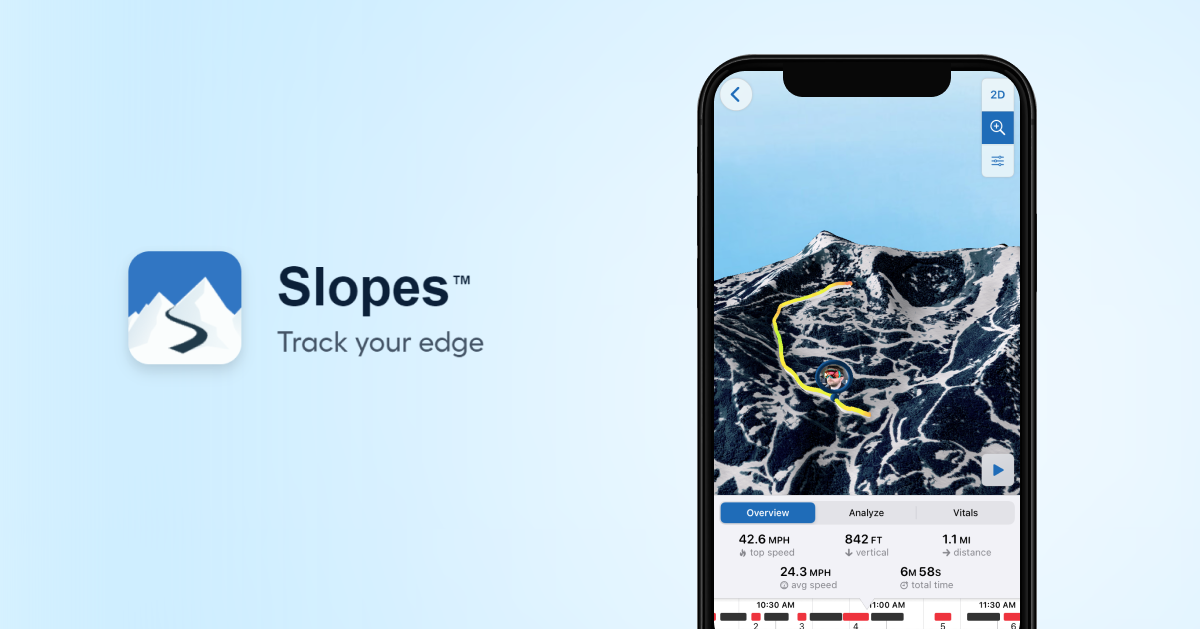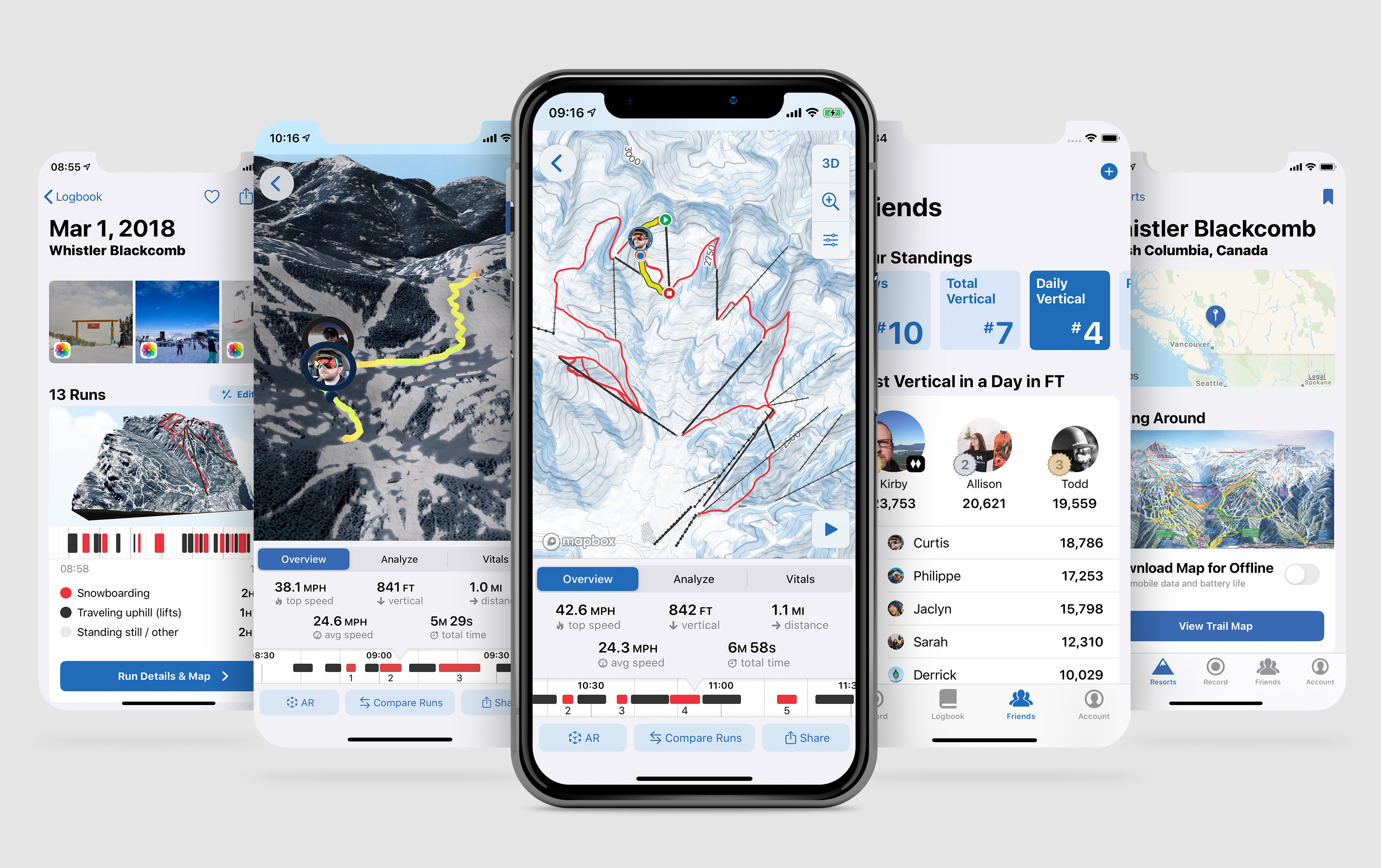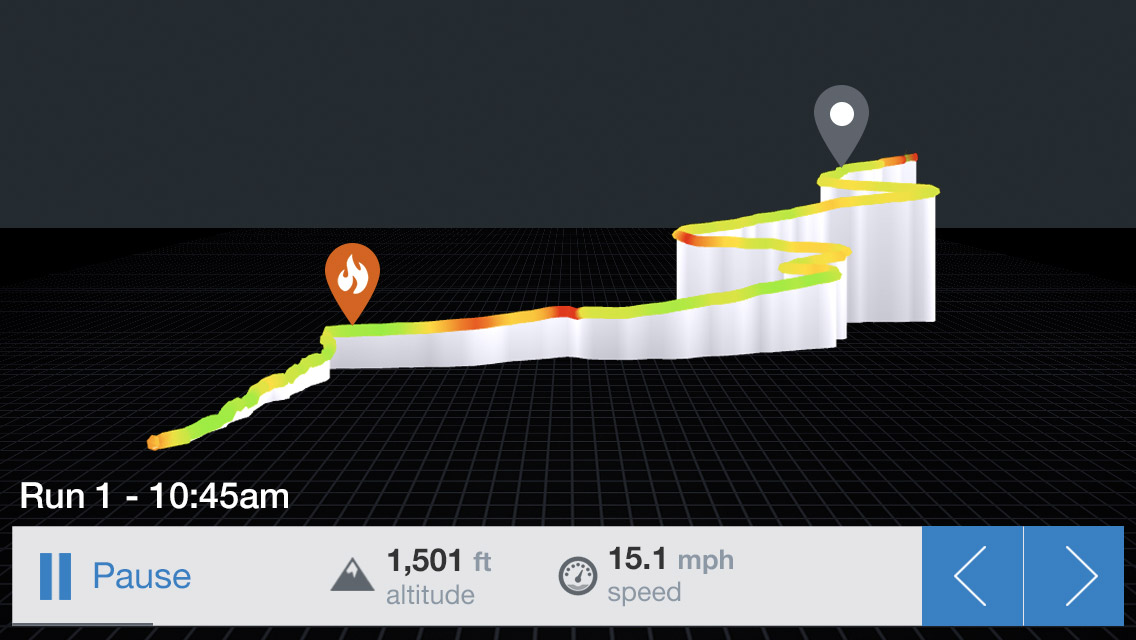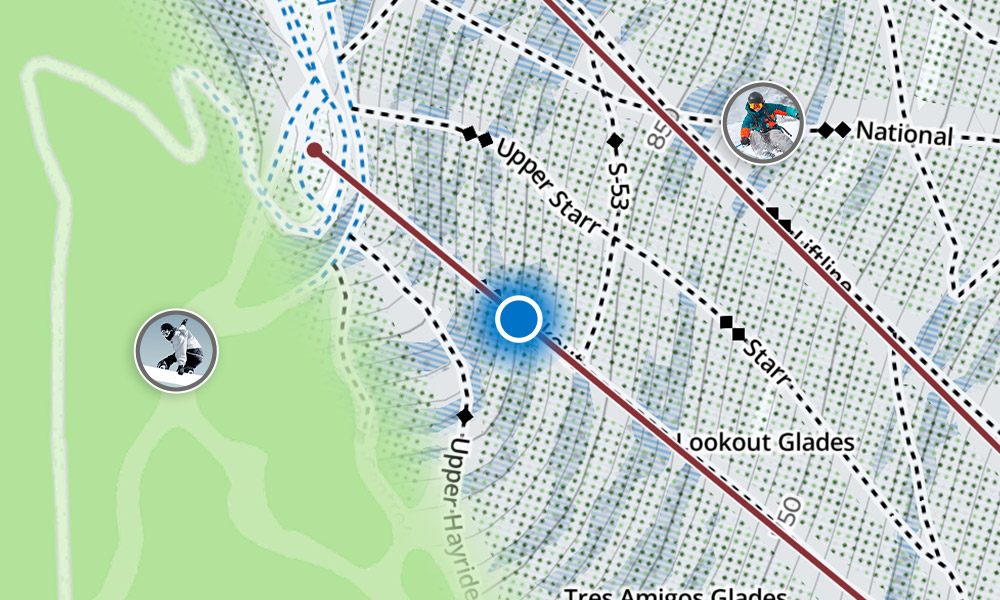
Curtis Herbert
Building Slopes, a Million Dollar Ski Tracking App


BLANCHARD
Over the last decade or so I’ve followed the journeys of many ski tracking apps. AlpineReplay had a ton of momentum but eventually pivoted once they started exploring the hardware side. SnoCru generated another swell of momentum but wasn’t able to find a long-term path and was eventually shuttered.
There’s one, however, that seemed to have cracked the code; Slopes. I’ve been tracking the app for a while, but only recently followed the app’s creator, Curtis Herbert, on Twitter. And when he tweeted that he hit the $1M ARR mark for revenue, I couldn’t contain my curiosity any longer and reached out to see if we could get more of his and Slopes’ story.
–
Gregg: Curtis, give us a little bit of your story. Where are you from, what’s your skiing background, etc.?
Curtis: Grew up in the Philly suburbs, so the Poconos were my home mountains for a long time. I started skiing, two or three times a year, when I was a kid but switched to snowboarding about a decade ago and haven’t looked back! Snowboarding really upped my love for the sport; I started taking trips up to Vermont (Killington and Stowe, usually) a few times a year and started heading out west, too. Thankfully in 2021 we decided to move to Boulder, which has been a nice upgrade to my options.
Gregg: Give us a bit of your career and dev background. How did you get started in mobile app dev?
Curtis: I’ve been programming since middle school, when my math teacher gave me a TI-82 calculator to entertain myself and I taught myself TI-BASIC. From there my dev journey has been all over the place — earlier years were on the web (backend and frontend) through high school and college. Out of college I got a job at Lockheed Martin, where I did … stuff … for 6 years. During my time there the iPhone was announced and I started playing around with iPhone development instantly. I’d always wanted to get into Mac software development and this seemed like an exciting new time and frontier to jump in. Lockheed really wasn’t for me, so I left them in 2011 to start my own consulting company as I had been doing web freelancing on the side all those years. Consulting started off as mostly web development, but I was able to slowly transition it to mobile dev to let me get into that more full-time instead of just a hobby.
Gregg: So you’ve fallen in love with skiing, you’re getting better at dev…when did you decide to combine these two things and build Slopes?
Curtis: April of 2013 is when I started Slopes. I actually had the idea a bit earlier, but I probably stopped myself for a good six months questioning if I’d be able to build something worthwhile. I was using another app at the time to track my journey into snowboarding, but while the app worked reliably, the UX was pretty rough. I remember sitting at Denny’s with friends after a night of riding trying to figure out where I hit my top speed, and I had to cross-reference like 2 or 3 screens memorizing timestamps to figure it out. That was when I got the itch to build Slopes, it just took a big push to actually start working on it.
“I can do better than this, I should just build an app myself!” is such a dangerous thing to say out loud. I didn’t realize at the time that statement at Denny’s would lead to running an app business.

Gregg: Over the years we’ve seen apps have their moment of fame when it comes to being the app skiers use on the slopes. When you built slopes, did you see shortcomings in the market? Did you think you could just do it better? What was the angle you took?
Curtis: Oh man, this could be a whole podcast episode of chatting on this topic alone.
The initial shortcoming I wanted to address was just that I wanted to make a product I’d love to use myself. I’ve been a big fan of how Apple approaches software and UX since I was a kid, and I wanted to bring that same polish and high bar to a winter sports app. That’s been a north star for the entire life of Slopes.
Another angle that took root for me a little later, in 2015, was to not be one of those apps playing the VC / Silicon Valley game. You know, the ones that 1) come into the market with a big splash and do all the tricks to get a bunch of users hoping to become The App so they can sell the company or IPO for a lot down the road 2) fail to get big enough in ~3 years and become “not worth the investment” with the promise of a big exit no longer likely 3) then get abandoned and linger on the store for years without updates.
Gregg: What are some examples of this?
Curtis: SnoCru was a sad example of this (based on what we saw them do from the outside, I have no inside knowledge). Early on they were super cheap, more focused on getting users than a sustainable business model it seemed. Then in their last 1.5 or so years of existence they used a bunch of what are called “dark UX patterns” to try to get as much revenue from users and ads as possible so the company would look tasty to buyers. I saw their App Store reviews took a sharp dive, now filled with people complaining about being “tricked” into paying $60/yr or having to watch an ad on their phone to start recording on the Apple Watch app. A bunch of stuff that wasn’t healthy for the business and would only help in the shot-term, not build long-term users. And sure enough, looking for that exit, SnoCru approached me last March floating a 1-2 million sale price. When I declined at that price they closed shop days later, giving only 2 week’s notice to their users and no way for users to get all their recorded data out. I reached out offering to build whatever was needed to let their users migrate their data to Slopes so they wouldn’t lose it, and never heard back.
Gregg: What did seeing another app struggle like that do for your strategy and plans?
Curtis: We all get frustrated seeing the apps we come to rely on disappear (or worse get sold and then change into something we hate to use) and so I became determined to build Slopes in a way that could sustain itself as a great product for decades. No fancy “sell to a resort for $10mil” exit plan, no “sell my users’ data to the resorts and make the app free” creepiness. Just simple fair pricing that could let me grow Slopes into a business, focus all my efforts into the app as a full-time job, and eventually hire a small team to help me build out all my crazy ambitious ideas.

Slopes 1.0 from 2013.
Gregg: You’re almost 10 years into Slopes, then. Has it been a pretty steady rise or did you have any tipping point type moments where your pace accelerated?
Curtis: I think the biggest inflection point was 2015 when I decided to turn it from a hobby app into a business. After the first two seasons of only being able to work on Slopes during nights and weekends I had a few thousand people who really loved the app and I thought there might be a business here. For the first two years though it was a paid up front app ($3.99) and that really held it back — it is very hard to persuade people to pay for software without being able to try it first. So I got serious that summer about turning it into a long-term business. I remember my a-ha moment was realizing that “season passes” at resorts are just yearly subscriptions, so I could totally pull off moving to free w/ a yearly sub, even though subscriptions weren’t much of a thing in apps yet. And it worked, after one season I was able to focus on the app full-time.
From there the growth has been steady, growing by a rate of ~2x every year. There have been lots of little steps along the way that have helped Slopes continue to grow at that pace, but that’s been more of a healthy long game of continual improvement than any one or two major spikes. Took lots of experimenting, fine-tuning, and learning along the way but that’s what you can do when you’re dedicated to building a great product.
Gregg: Over those years you’ve processed a ton of data. When you look at all of that, does anything stand out in terms of skier behavior that really stands out or has surprised you?
Curtis: I know for users, one surprising thing is how much of their day they end up standing in line or on lifts vs actually riding downhill.
For me though it hasn’t been skier behavior at the run-by-run micro level but more of a macro level thing. Specifically: weather and how that affects skiing. I’ll tell you, when I got into this I didn’t expect that climate change would be the biggest threat to my business. I remember Epic/Vail announced a big drop (8%?) in early-to-mid season traffic a few years back and I saw all that coming well ahead of time. It was all in the regions that were having really bad starts to the season (Whistler reported its worst early season snowfall on record in 30 years that year). It’s scary to see some resorts in Europe never opened that season because they don’t have snowmaking and rely on natural snow. With the data I have I can see all these trends at over 3,500 resorts world-wide, which really gives me a big-picture view of it (which got me to quickly start donating 2% of all the money Slopes earns every year to Protect Our Winters).

Slopes’ new interactive trail maps.
Gregg: Resorts and apps have always been a bit of a love/hate relationship.From your perspective, how all of those things intersect and how will that evolve going forward?
Curtis: Resorts are in a tough spot because apps are hard, and expensive, to do right. So much of resorts’ expertise is in the physical experience, they’d need a lot of new blood coming in that really get tech to nail the digital experience. But honestly I don’t think it is their job to knock an app out of the park. Do I really want all my past data locked into an Ikon app when I’m debating getting the Epic pass this year or visa versa? (Of course to the resorts that might sound great, lock-in is always a good thing to deter you from leaving). But your skis don’t work at only one set of resorts, and the resorts aren’t out here trying to push their own skis on you to “enhance the customer experience.” I think the digital stuff / apps should be resort-agnostic too.
I’d love to see resorts just partner with Slopes and offer a Slopes season pass as part of their season passes, but I may be just a bit biased that dream, ha. Let them focus on the best on-mountain physical experience possible, let me focus on the best digital experience possible. We did something kinda like that with the Indy Pass this year where their passes come with 2 days of Slopes Premium, but we’ve never had a resort itself be interested in anything more than Slopes being a rebranded tab in their own apps.
Gregg: How do you view the relationship between your app (and technology in general) and an experience that’s largely about unplugging and being away?
Curtis: You’re 100% right that we can’t let tech take over the ski experience. It is an easy trap to fall into: getting excited about what we can do, not if we should build it. Tech needs to support this sport we use to disconnect, not try to wedge its way into our lives and demand our “engagement” with it (see: digital addiction, etc).
Tech isn’t bad when done right though: text messages for coordinating on the mountain instead of everyone having to buy radios. GoPros for taking our own photos vs the resort’s on-mountain photographers. I try really hard to take a back seat to the ski experience with Slopes, only being helpful when wanted, and that’s the path I want to keep taking.
Gregg: What does the future of that relationship look like from your perspective?
Curtis: Where do I see that going? Resorts are starting to push trail maps to the phones, which is a rushed and imperfect solution at the moment, but what can that look like when mapping is done hands-free via AR in our goggles? Just like Google Maps / GPS dramatically changed how we drive and minimized the fear of getting lost back in the 2000s, that kind of tech for skiing will dramatically lower the barrier for a lot of people getting into the sport worried about accidentally ending up on a double black diamond their first time at Big Sky.
You better believe I’ve been building towards that.
About Gregg & SlopeFillers
I've had more first-time visitors lately, so adding a quick "about" section. I started SlopeFillers in 2010
with the simple goal of sharing great resort marketing strategies. Today I run marketing for resort ecommerce and CRM provider
Inntopia,
my home mountain is the lovely Nordic Valley,
and my favorite marketing campaign remains the Ski Utah TV show that sold me on skiing as a kid in the 90s.
Get the weekly digest.
New stories, ideas, and jobs delivered to your inbox every Friday morning.
